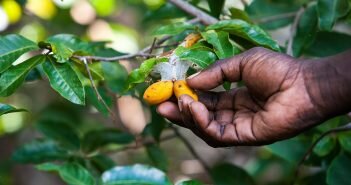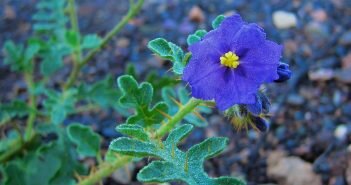I attended an introduction to Permaculture with John Champagne from Brogo Permaculture Gardens while working at Caroola Farm in NSW, Australia. I previously completed my Design Certificate but his approach using David Holmgren’s permaculture principles was inspirational, a perfect intro, and enlightening from a teaching point of view.
We started, as all Permaculture courses start by defining Permaculture, which is always daunting due to its enormous scope. John then introduced the Ethics and, the principals became the structure of this 2 days course.
Earth Care: “Rebuild natural capital”
People Care: “Look after self, kin and community”
Fair Share: “Set limits and redistribute surplus”
“Consciously designing landscapes that mimic the patterns and relationships found in nature which yield an abundance of food, fibres and shelters for the provision of local needs” David Holmgren
We ended up building on the definition by reinforcing the idea of a fair share ethic, which is trans-generational. We added the words: “for the provision of present and future local needs” at the end.
This Permaculture Intro was well designed and it made good use of principle 7, integrate Rather than Segregate. Instead of going through the principles first and then drilling into more specific applications of Permaculture. The principles were the structure and the various techniques were integrated, organised around the chapters of Permaculture principles. This enabled us to really understand the importance of the principles, the pattern of Permaculture designs and how they inform and direct the creation of various techniques, the details of Permaculture.
-
Observe and Interact
“Beauty is in the eye of the beholder”
This Permaculture principle was the perfect introduction to the creation of the schematic plan, which is the first step in Permaculture designs. Observing all the elements that cannot be changed or moved such as wind, water and sun and how we might make the most out of them. Tips such as looking at which way the trees are bending for information about the most destructive winds or walking on your property when it rains heavily to see where the water flows were discussed.
-
Catch and Store Energy
“Make hay while the sun shines”
Water takes a big part of this principle, as it is often the most important energy to store when farming, especially in Australia. Soil being the most efficient way to store water, we briefly explored techniques and systems such swales, diversion drains, Keyline and trees.
-
Obtain a yield
“You can’t work on an empty stomach”
We covered applications that enabled the protection of crops such as fencing and netting. We also looked at frost and how it flows. We talked about tools such as Polytunnel and cloches for vegetables and seedlings. John explained us how he grows Almonds and citrus on the same hill using windbreaks. The frost runs downhill until it reaches a wall and then goes back up leaving the area behind it frost-free. We also explore John’s hot composting technique and had a go at making one.
-
Apply self-regulation & Accept feedback
“The sins of the fathers are visited on the children unto the seventh generation”
The first lesson for this principle is accepting positive and negative feedback. Hazelwood farm in NSW experienced first hand the power of negative feedback. After having work their soil in their market garden for months, an unusual rain poured down and washing away tones of fertile top soil. There are many solutions to this problem, which could be transformed into an opportunity as long as we accept the negative feedback. Climate change is today the biggest negative feedback our society is facing and it is about time we accept it.
The self-regulating aspect of this Permaculture principle relates to our capacity to restrain ourselves and discourage inappropriate activity to ensure that systems can continue to function well.
-
Use & Value Renewable Resources & Services
“Let nature take its course”
Many tips came out of this Permaculture principles, it is a rather interesting one to explore with a group. John says: “Whenever you use a plant or a animal to provide a service, you are better off”.
- Use goat to remove blackberries instead of roundup
- Use wine instead on shed-clothes for summer sun protection
- Plant mulch plant such as Vetiver grass, banana grass, legume trees and Confrey instead of buying in mulch and fertilisers.
- Plant trees and use them as poles for fencing
One of the students shared with us an interesting technique that she uses to protect her orchard from parrots using guinea pig to attract hawks. The presence of hawks apparently deterred the parrots from visiting the orchard and so the need to net it.
We also explored more elaborate techniques such as reed beds to reuse grey water, John’s DYA human manure treatment and biogas technology.
-
Produce No Waste
“A stitch in time saves nine.” “Waste not, want not.”
The ultimate goal is a close system where all input are produce from within the system and no waste is created. There is no waste in Permaculture, as it becomes resources. John says: “In Permaculture all you do is move resources around”.
Two tips came out of our discussion around this Permaculture principal:
- Maintain machinery and tools to optimize and keep them longer
- Get onto it now before the problem gets bigger
-
Design From Patterns to Details
“Can’t see the forest for the trees”
Through this Permaculture principal we explored patterns found in nature and how they are applied to Permaculture. The serpentine pattern find in swales, the branching patterns of trees found in garden paths or the snail pattern found in herb gardens. We also covered zones, a basic element of Permaculture design, which are concerned with the flow of energy inside our system. Zones are abstract conceptual boundaries on your propriety, which helps to plan efficient energy use. Things you use most often, and the things you have to pay the most attention to, are placed closest to the house or on most frequented paths. But most importantly, create the backbone of your design first using the sectors, patterns and zones and add the details such as specific species later.
-
Integrate Rather than Segregate
“Many hands make light work”
This Permaculture principle is perfect to explore the concept of multiple functions. Each element in the system should be chosen and placed so that it performs as many functions as possible. The rule of thumb is that each new element you add to your system should have at least 3 functions. For example a tree could possibly provide food, shade, shelter for wildlife, mulch and building materials, be a wind break, fertilize the soil, prevent erosion and raise the water table. John adds that you should have back up elements for each function, for example an alternative electricity source than solar panel for cloudy days. We then explore guilds through this Permaculture principle. Guilds are defined by Mollison as “a harmonious assembly of species clustered around a central element (plant or animal) that acts in relation to this element to assist its health, aid our work in management, or buffer adverse environmental effects.” This article explores different types of guilds and is worth reading,
-
Slow and Small Solution
“The bigger they are, the harder they fall.” “Slow and steady wins the race.”
This is a Permaculture principal that is starting to go mainstream through concepts like slow food, slow cities and the idea that we need to slow down. In relation to a project, it is about starting small, getting it under control before expanding out. One way of doing this would be to use a trial garden and trial your new idea before implementing it large scale. It is also a concept, which advocates doing the minimum for the greatest effect. For example build a dam where it will hold the most water requiring the least earthwork possible. Finally this Permaculture principal includes the notion of small scale and local rather than large scale and global.
-
Use and Value Diversity
“Don’t put all your eggs in one basket”
Diversity is pretty straightforward when it comes to species diversity. It is well know that polycultures are more resilient than monocultures. Though diversity also relates to time and functions. We covered the concept of functions diversity or multiple functions in principle 8, each element of your system needs to have at least 3 functions. Diversity of age or time stacking relates to the concept of succession. An empty field left undisturbed for long enough will inevitably turn into a forest. Nature will fill barren ground with plants, often called weeds, which quickly stabilise and build the soil. These pioneer species will prepare the ground for larger plants, until the area is filled with trees and understory shrubs. Permaculture uses this time pattern to improve soil with the least effort. For example planting pioneer legumes trees such as Acacias among or before planting fruit trees will improve soil fertility, keep moisture in the ground and protect young fruits trees from harsh summer sun and destructive winds. Since Acacias are short lived and fast growing species, they will help your fruit trees establish before dying off.
-
Use Edge and Value the Marginal
“Don’t think you are on the right track just because it’s a well-beaten path”
Edges, the place where two cultures or two ecosystems meet is where the most interesting things happen. These places are often the most diverse and productive elements in your system. Mangroves, where water meet the land are one of the most resilient and bio diverse ecosystems on earth. The edge of a forest is usually more productive because it receives more sun. Edges create microclimates with great design opportunities.
Marginal usually relates to ideas or people. All great ideas are marginal at first before they go mainstream, Permaculture is itself a perfect example. Marginal people have a great deal to teach us because they come with a different eye from a different viewpoint.
-
Creatively Respond to Change
“Vision is not seeing things as they are but as they will be”
Things change fast and climate change is a big reminder of this principle. We might not be able to control all change, though we are in control of how we act in response to it. Other changes such as seasons or forest succession are predictable and can be incorporated in our designs and management plan.
Permaculture Principles applied to Biogas
We then took one technology, biogas and looked how this tool fitted with the 12 Permaculture principles. Before adding anything to our design we should go through this exercise and see how many principle are applied to the new element, the more, the merrier. Biogas is a technology, which uses any organic waste, especially cows manure to produce methane that is then used for cooking, heating, lighting and gas powered engine.
- Observe and Interact: The observation that cow manure emit lots of methane and interact to create a tool which harness its energy
- Catch and Store Energy: Biogas catch the methane from organic waste and store it for later use
- Obtain a yield: Methane for various uses
- Apply self-regulation & Accept feedback: When poorly made with no escape for the methane the biogas can explode (It happens in Asia where it is widely used), there is your negative feedback. It is also a renewable resource moving us away from fossil fuel and reducing our dependence on corporate owned energy. Thus making us more resilient.
- Use & Value Renewable Resources & Services: Manure is a renewable resource and the cows provides a renewable service
- Produce No Waste: Pretty self-explanatory
- Design From Patterns to Details: a little trickier
- Integrate Rather than Segregate: It integrates even further the role of the cow and other organic waste in our design, adding a function and a resource.
- Slow and Small Solution: Instead of relying on massive infrastructures, bringing energy from all the way out there, you rely on a smaller technology right here, making it as you go.
- Use and Value Diversity: Diversity of functions
- Use Edge and Value the Marginal: biogas is still a marginal idea
- Creatively Respond to Change: Helps us to stop our consumption of non-renewable resource.
We finished by reviewing the principles, their symbol, photos and expression with a card game built by David Holmgren.
And left inspired and hopeful with a “Whoosh” by John Champagne, (whatever we are doing on the image below).






6 Comments
I like what you guys are up also. Such intelligent work and reporting! Carry on the superb works guys Iˇve incorporated you guys to my blogroll. I think it’ll improve the value of my website 🙂
Thank you for following us 🙂
Wow! Thank you! I continuously wanted to write on my blog something like that. Can I implement a portion of your post to my blog?
Thanks, contact me at
Hi there. I am just preparing an introductory workshop to permaculture and I found your article very inspiring. This time I might use another approach as we have only one day to explore, but I keep it in mind.
I like how this approach works through exploring the principals via the fields of application. Good job!
Thanks Melea so much for the comment.
I actually would love to hear which approach you choose for your intro, please share it with us. If you are a bit of a writer, you are also welcome to write and article for Wandering Farmers.
Keep up the great work